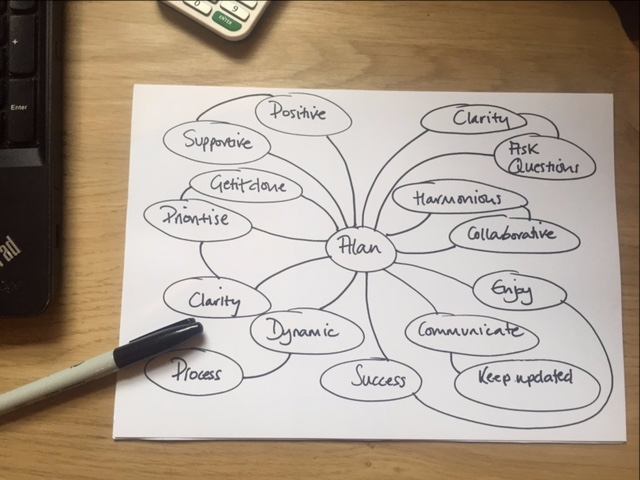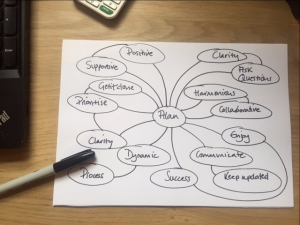
“Owning it begins with a mindset, but very crucially continues with tangible steps that we can take in order that our actions are proactive, specific, and clear. It starts with our physical state before we consider the emotions, feelings and thoughts we have jumbled up inside us…”
Let’s get stuck in right here. Life is far more enjoyable when we really own it. We own the ups and the downs, the good and the bad and this is what today’s EPIC Insight is all about.
Owning it begins with the mindset. It’s about making a proactive decision to be responsible for the actions that you take.
In another EPiC Insight (Being Present When Presenting) I touched on the importance of the Hierarchy of Control™. This is required to identify and correct the state of our bodies before we communicate with a sense of personal responsibility.
The Hierarchy of Control™ is a strategic process that helps you to manage your way through your thoughts feelings and emotions so that you can own your actions:
1. PHYSICAL control
2. EMOTIONAL control
3. Control of FEELINGS
4. Control of THOUGHTS
5. Control of ACTIONS
Owning it begins with a mindset, but very crucially continues with tangible steps that we can take in order that our actions are proactive, specific, and clear. It starts with our physical state before we consider the emotions, feelings and thoughts we have jumbled up inside us.
I talk about the physical state in 3 layers:
· Corporal Leadership
· Vocal Leadership
· Respirational Leadership
Your body, voice and breath are your main leadership tools in presentations, meetings and calls.
CORPORAL LEADERSHIP
Centre and ground yourself to achieve stillness and silence. The more purposeful you are with any movements you make, the more likely you will be to draw the attention of others.
Notice any leakages in your head, face, breathing, torso legs arms and hands. Leakages may include a jiggling leg, unconscious facial expressions you may be in the habit of using, muscle tension etc…
When you use gestures, make sure they have a purpose. Become aware of your body and habitual gestures you make that could dilute the impact of your message.
ACTION Practice standing and sitting quietly in neutral whilst at your desk, waiting for or sitting on planes trains or automobiles, or while in a meeting. Notice what effect it has on your thoughts and feelings:
Neutral
- feet shoulder-width apart and parallel, with loose knees
- if sitting, bottom right at the back of the chair
- top of your head as high as possible
- shoulders hanging relaxed
- your skeleton supporting itself without effort
- breathe in and out with your diaphragm using all your abdominal muscles (stomach, sides, groin, pelvic floor and even thighs)
VOCAL LEADERSHIP
Learn how to modulate your voice. Choose specific moments in a communication to use a particular voice, to highlight a sense of importance, to bring a lightness, or to demonstrate your commitment. Use pauses to give your message space to land and time for your audience to absorb it.
ACTION Practice the elevator (moving the pitch of your voice from low to high and back down to low in a flowing sound on one breath); focussing on your belly to add richness, power and feeling to your voice. Practice in the bath and the shower. When driving, sing along to the radio, exploring the expressive range and depth of your voice. On the phone try out different postures, sitting or standing and register any changes in your voice. Listen to other people’s voices. Can you tell if the voice is coming from their head, chest or belly? What effect does it have on you?
RESPIRATIONAL LEADERSHIP
When under pressure, the heart starts to race and has erratic surges, you will likely recognise this from past experience. It might be difficult to believe, but the fastest way to get the heart back in rhythm is to focus on your breathing. I like to think of the breath as a mentor or guide providing a rhythm for the heart to follow, until it is back on an even keel again.
ACTION Focus on your breathing, particularly when you are under pressure. Practice diaphragmatic breathing; (this is when you consciously push your diaphragm down when you breathe in and up when you breathe out) it helps to releases emotional tension and gives your brain something constructive to focus on, rebooting us when we slip into fight/flight mode.
Now you are ready to move onto the next level – Your Emotional State. More on that in a future article.
To book a free ideas and strategy session with one of our consultants, please click here or call us on 00 44 (0)1932 888 885.




















